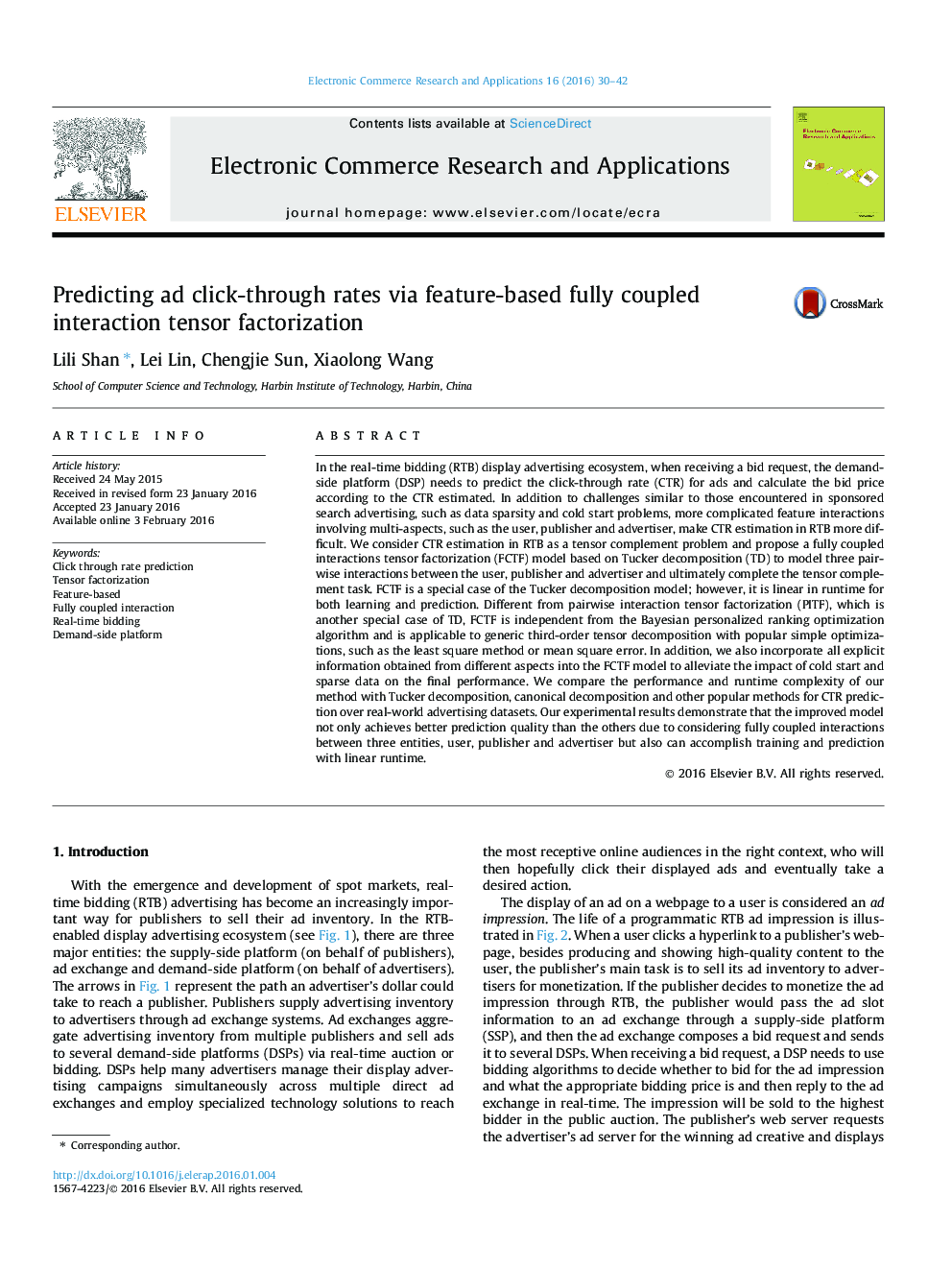| کد مقاله | کد نشریه | سال انتشار | مقاله انگلیسی | نسخه تمام متن |
|---|---|---|---|---|
| 379537 | 659482 | 2016 | 13 صفحه PDF | دانلود رایگان |
• We address CTR prediction by a novel tensor factorization model named FCTF.
• We incorporate all types of information into FCTF model to relieve data sparsity.
• We give the relationship between FCTF and PITF, Tucker, CD decomposition.
• We evaluate our model and algorithm on real-world bidding log data.
In the real-time bidding (RTB) display advertising ecosystem, when receiving a bid request, the demand-side platform (DSP) needs to predict the click-through rate (CTR) for ads and calculate the bid price according to the CTR estimated. In addition to challenges similar to those encountered in sponsored search advertising, such as data sparsity and cold start problems, more complicated feature interactions involving multi-aspects, such as the user, publisher and advertiser, make CTR estimation in RTB more difficult. We consider CTR estimation in RTB as a tensor complement problem and propose a fully coupled interactions tensor factorization (FCTF) model based on Tucker decomposition (TD) to model three pairwise interactions between the user, publisher and advertiser and ultimately complete the tensor complement task. FCTF is a special case of the Tucker decomposition model; however, it is linear in runtime for both learning and prediction. Different from pairwise interaction tensor factorization (PITF), which is another special case of TD, FCTF is independent from the Bayesian personalized ranking optimization algorithm and is applicable to generic third-order tensor decomposition with popular simple optimizations, such as the least square method or mean square error. In addition, we also incorporate all explicit information obtained from different aspects into the FCTF model to alleviate the impact of cold start and sparse data on the final performance. We compare the performance and runtime complexity of our method with Tucker decomposition, canonical decomposition and other popular methods for CTR prediction over real-world advertising datasets. Our experimental results demonstrate that the improved model not only achieves better prediction quality than the others due to considering fully coupled interactions between three entities, user, publisher and advertiser but also can accomplish training and prediction with linear runtime.
Journal: Electronic Commerce Research and Applications - Volume 16, March–April 2016, Pages 30–42
